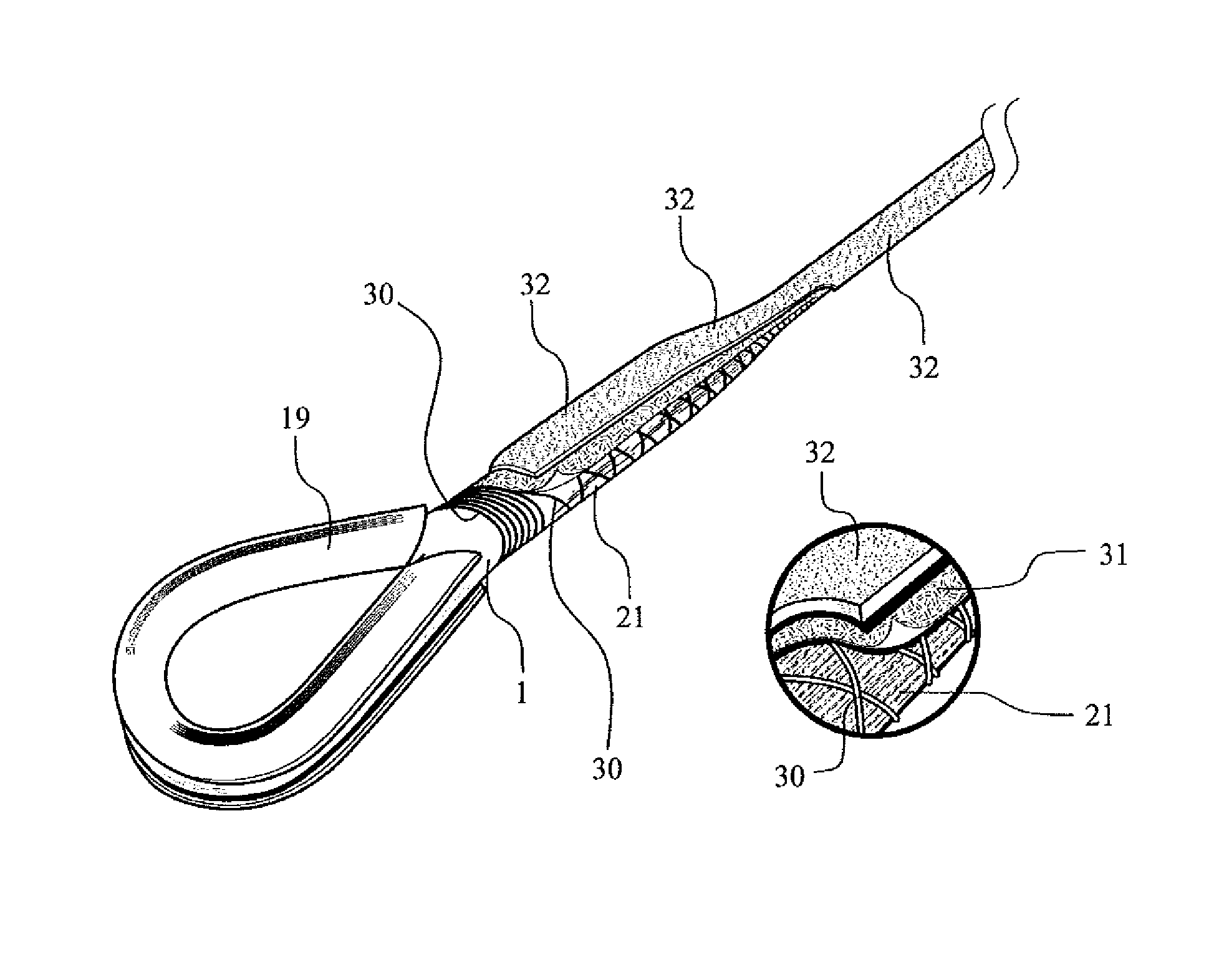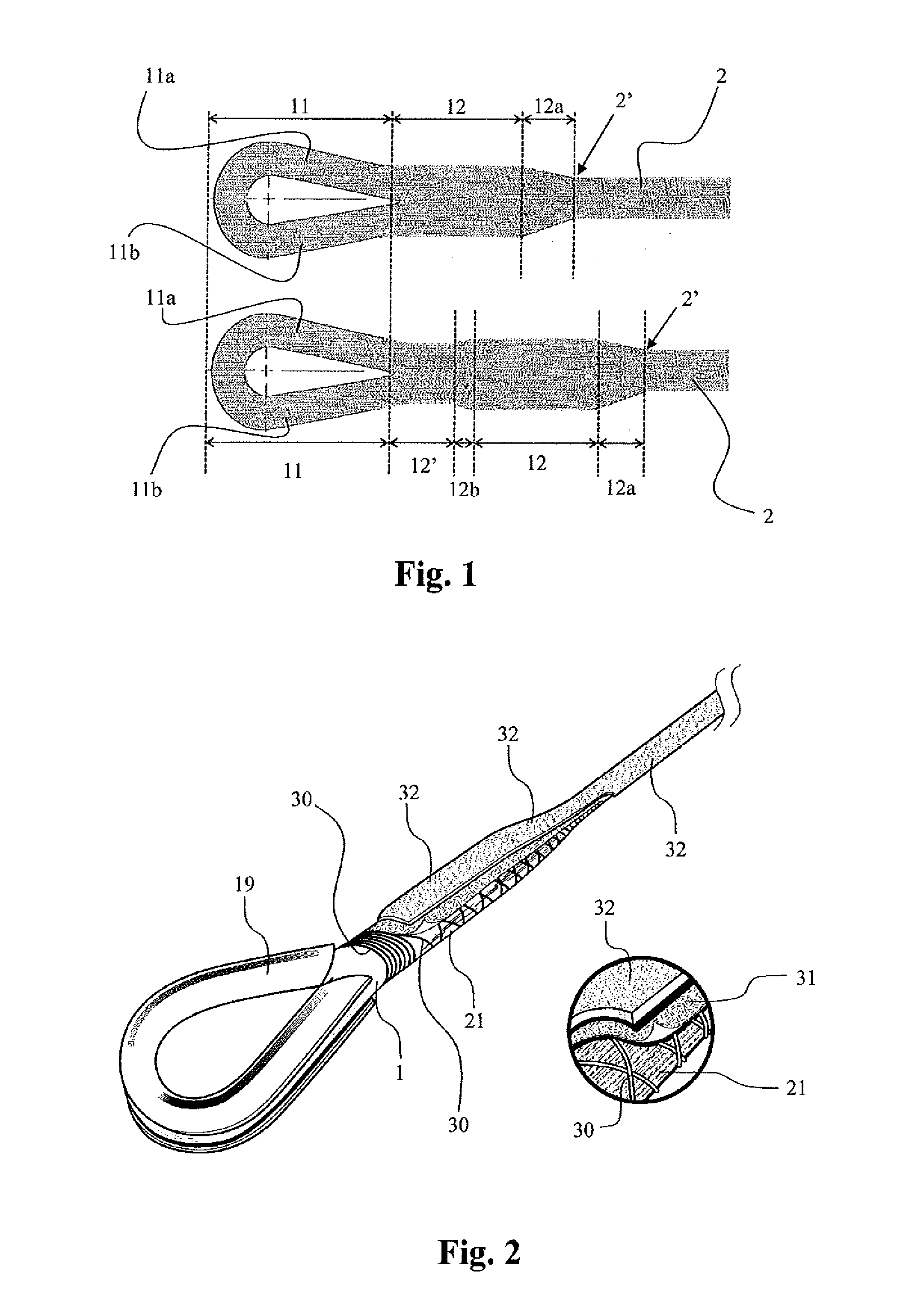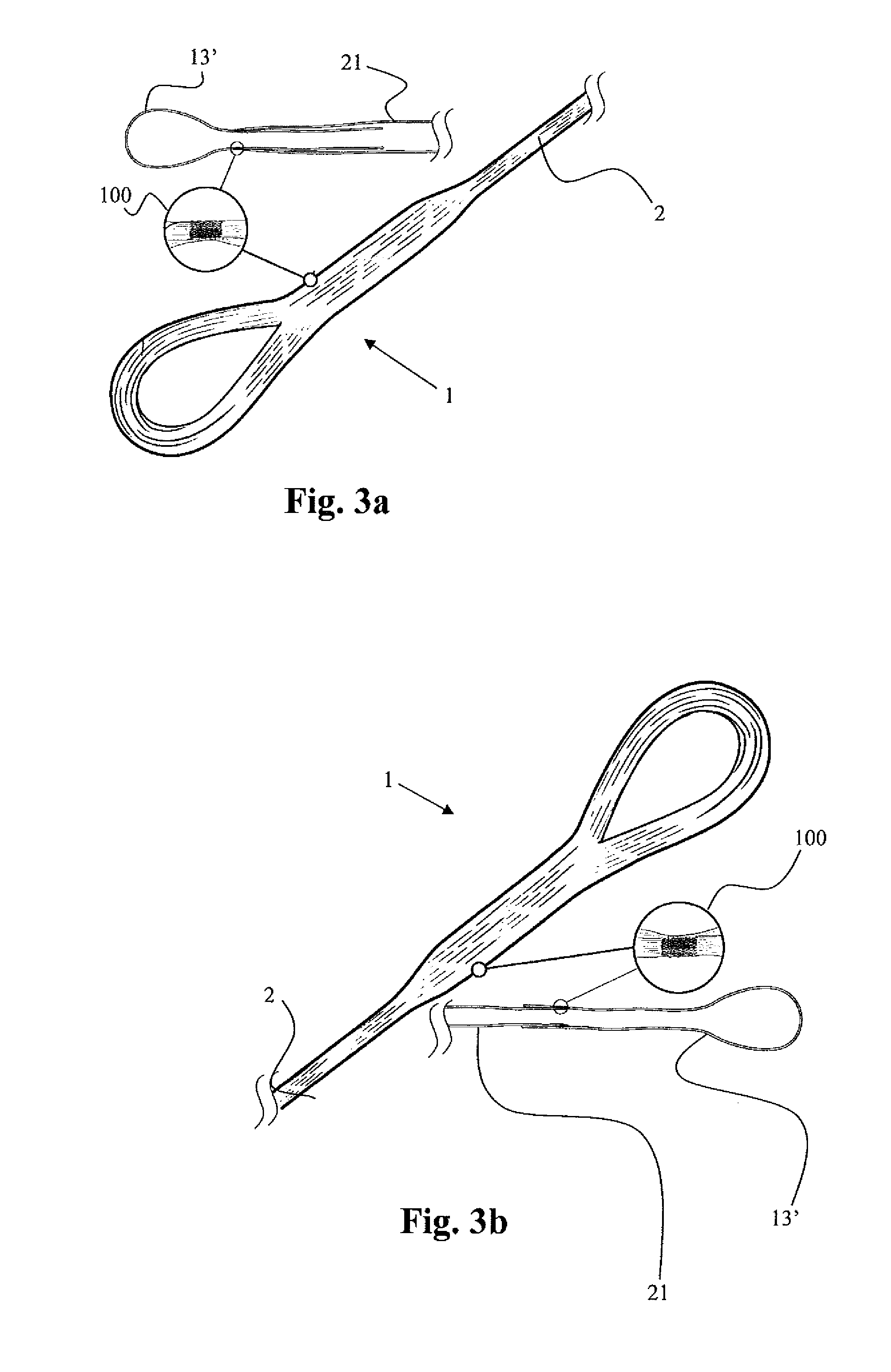However, technical and logistic difficulties associated with the depth and distance from the
shore has brought new technological challenges.
Although said materials have greater performance than
polyester, the use of classical construction technologies currently used by thread industries has resulted in low efficiency on the cables, which is aggravated by the
increased diameter that is proportional to the maximum break load (MBL).
The low efficiency related to the construction aspects from the state of the art requires the use of a larger amount of threads for an intended MBL to be achieved, reducing the price competition of these materials over the use of
polyester.
The first one is related with the reduction in the strength of the threads due to high wear and loss of material on the walls of the filaments during the production process of the cable.
This operation also implies several problems in aligning and controlling the stress of threads on the seam or splice.
Intrinsically, the two latter aspects explaining the low efficiency of cables made of high modulus threads are interrelated with each other, wherein these aspects have as the main cause the low elongation of high modulus threads resulting in an intolerance to local mobility differences.
That is, the different paths among the thousands of threads jeopardize mobility thereof, overloading regions of the cable during tensile assays or use under extreme situations.
This effect is even worse in the regions were splices are seamed and therefore on these regions there is a probability for the cable to break.
However, with the technology known from the state of the art the construction in parallel precludes the use of splice-type terminations, as the hand seaming of the splice threads to the cable body is practically impossible.
However, for cables of high MBL (used in applications of production platforms and
offshore drilling rigs, for example, the tensile strength ranges from 600 to 1250 tf), the local stresses between the cable body and the terminations are huge, and in this case, using a mechanical clamp is certainly not possible.
That is, unless the connection can be made homogeneously over the entire cross section area surface of the cable, it is much harder to obtain an effective terminal in cables of high
diameter as compared to those of low
diameter.
However, in practice, when high MBL values are being obtained, sockets become inefficient, considering that in this type of terminal a few millimeters of filament-resin interaction are needed for the
adhesion strength to overcome the thread
breaking strength as widely known, and also reported by Mckenna, 2004.
The result is the gradual detachment of the thread-resin interface resulting in local
stress concentration and consequent breakage of the filaments.
However, the
disadvantage of this type of structure is that the cable body has twice the number of yarns than its terminations.
That is, the greater likelihood of fracture is on the terminations, which makes it impossible to be used on very
high load applications, as is the case of for example of anchorage cables.
However, these documents do not describe how to manufacture the terminations.
Nevertheless, as mentioned before, a problematic aspect of this technology is how the termination ends are connected.
However, since the tensile strength of the cable is mainly in the form of shear and compression forces onto yarns of the ends, the lower the thread strength in the crosswise direction, the worse the performance of this type of device.
An example is the HMPE thread which has an Young's modulus and a tensile strength comparable to a steel cable; however, this type of thread has low
shear strength and
transverse compression.
Therefore, using this type of device in high modulus threads would not result in good efficiency, especially when high failure load (or high MBL) cables are to be manufactured.
However, the document does not disclose results on the efficiency of the tested cables.
Another important issue related to this document is the applicability of such
hybrid construction when using steel and HMPE.
HMPE has a more pronounced flowability problem as compared to other synthetic yarns.
Thus, even with recent advances in this respect (as shown in
patent document WO 2012 / 139934), such a problem would make long term applications impossible—which is the case of oil platforms anchorage.
The tensile strength would cause the steel threads to overload with time and under an extreme condition (as is the case of a severe
storm), the structure would probably collapse.
 Login to View More
Login to View More 


